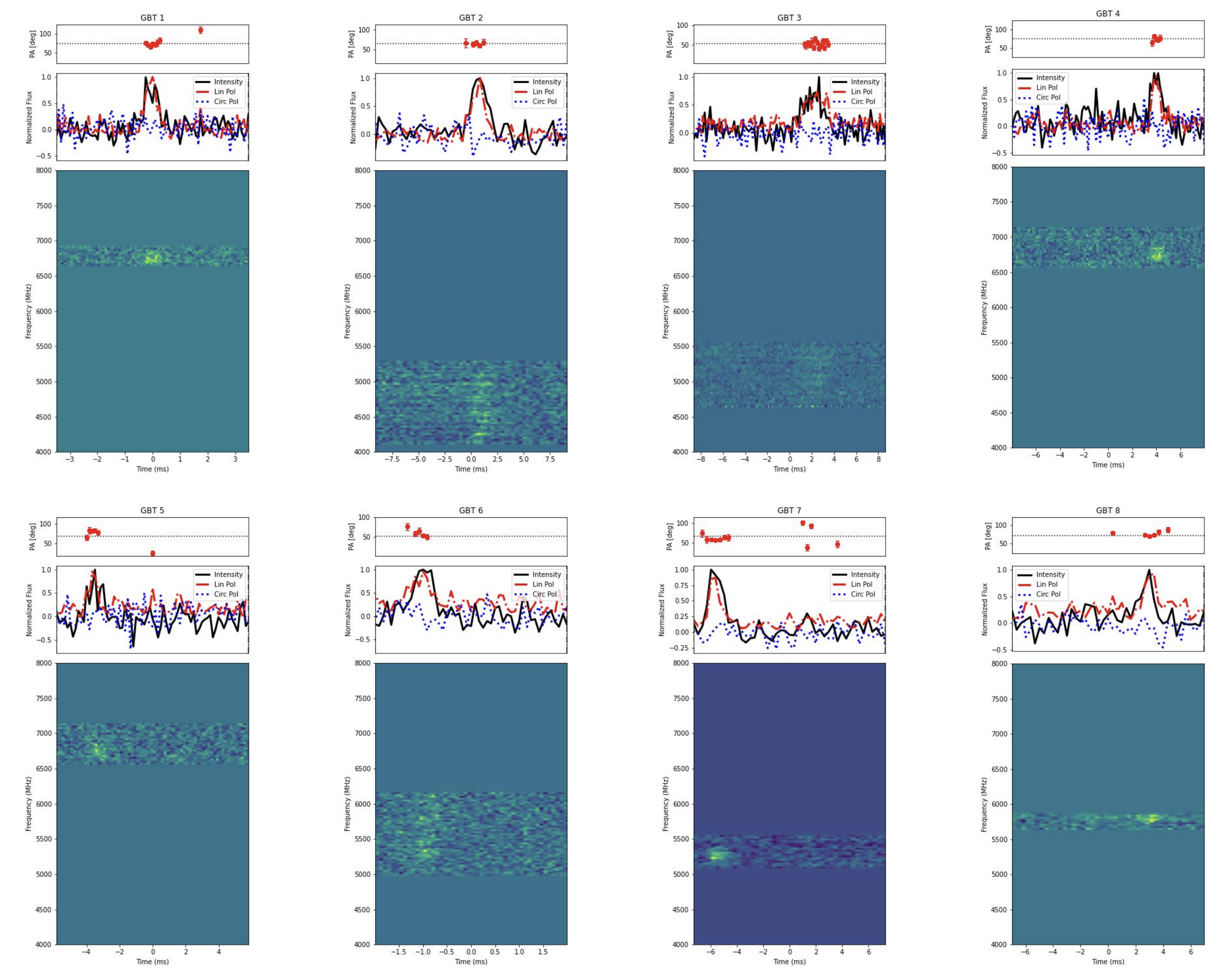Re-Analyzing Low-Energy ('Smudgy') Bursts in a Breakthrough Listen Observation of FRB 121102
FRB 121102 was the first Fast Radio Burst (FRB) source discovered to repeat. Over the course of many observations since its discovery, a significant number of low-energy (or 'smudgy') narrowband bursts have evaded detection in standard searches—many just surpassing telescope detection thresholds. Breakthrough Listen caught a plethora (72, to be exact) of these bursts from FRB 121102 with the Green Bank Telescope (GBT) in 2018. These ubiquitous, yet elusive bursts raise an important question in the realm of FRB detection: what are we missing?
We re-analyzed the 2018 GBT observation of FRB 121102 taken at high frequencies of 4-8 GHz. Our aim was to calibrate and investigate the as-of-yet unmeasured polarization properties of eight of these dim bursts, originally caught by a machine-learning-based transient search method involving convolutional neural networks. All of these lower energy bursts were undetectable with standard full-band search techniques, so to improve our sensitivity, we lowered the detectable signal-to-noise threshold by dividing the observing band into sub-bands and searching each individually. With this simple tweak, we were able to uncover 20 of the 72 bursts, eight of which were bright enough to allow for accurate polarization analysis.

Eight low-energy narrowband bursts from FRB 121102 at C-Band (4-8 GHz). The alignment of the linearly polarized data (dashed red lines) with the total intensity (solid black lines) in the time series indicates that all bursts are nearly 100% linearly polarized. Above that, the polarization position angles (red scatter plots) appear roughly stable (flat) across each burst.
In the end, we confirmed that these bursts showed polarization position angles and Faraday rotation measures (the "twisting" in polarization direction that occurs when radio waves at different frequencies travel through magnetized plasma in the interstellar medium) consistent with other bursts from FRB 121102 that had been detected around the same time. This study, among others, emphasizes the importance of searching for weak bursts in FRB data. Discovering burst-types of varying brightness might very well give rise to new insights into the mechanism behind their emission, or the interstellar material through which they traveled on their long and arduous journey to Earth.
All the data used in this analysis, as well as the polarization plots, are publicly available. An overview of our methods and results has been published in the Research Notes of the American Astronomical Society.
Banner image: Danielle Futselaar / Breakthrough Listen
